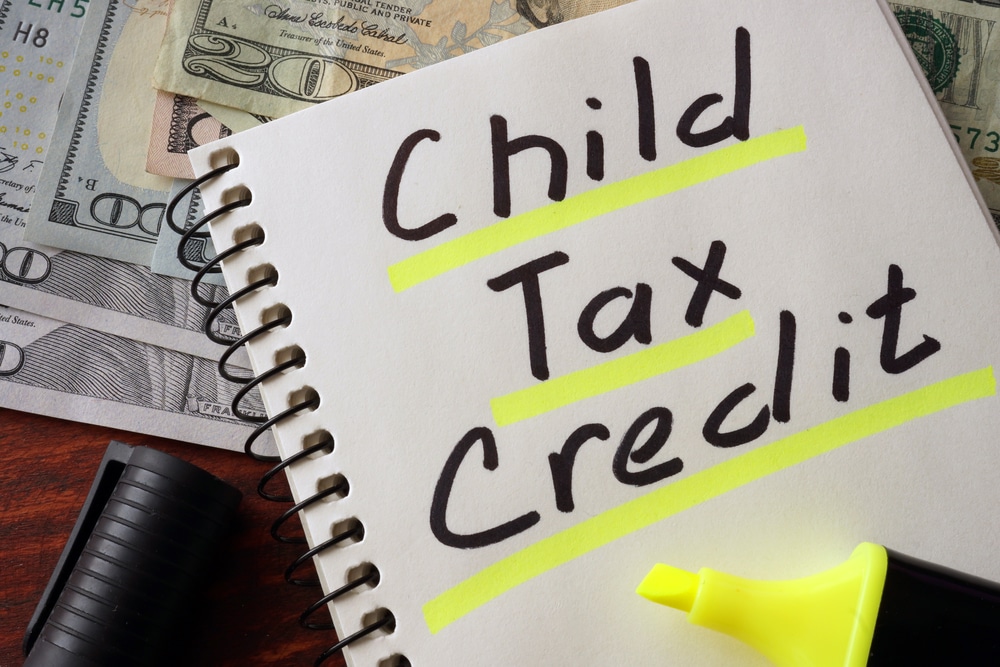5 Valuable Things You Need To Know About Child Tax Credit for Expat Parents

Poverty-stricken households are one of the oldest social issues. In the United States, about 38% of children live in low-income families—that’s nearly 30 million children struggling financially.
This situation, as well as other socio-economic challenges, worsened when the pandemic hit. At one time, the number of children with at least one unemployed parent reached a record high of 21.7% in 2020. This translated to higher rates of hunger, missed rent payments, and increased anxiety. To remedy this, the government enhanced economic measures like the Child Tax Credit.
Read on to find out more and how it can help you as an expat parent.
What is the Child Tax Credit?
The Child Tax Credit is an annual tax credit that the U.S. Government grants to taxpayers with qualified children. As part of the Taxpayer Relief Act of 1997, it plays a crucial role in supporting families to raise their children by giving out tax refunds of about $2,000 (later increased to $3,600 in 2021) per qualified dependent.
With this, taxpayers can offset their expenses from raising a family, such as food, housing, healthcare, and other necessities for children. However, the benefits may not be the same from household to household and may vary depending on what amount your family is eligible for.
5 Things You Should Know About Child Tax Credit
1. Who is eligible for this tax credit?
Before you can avail of this tax credit, there are certain qualifications that you and your household must meet. First, you are eligible to claim this tax credit if you have children that are 16 years old and below.
You’ll have to prove that they are your children, whether biological, step, or foster, and that they are U.S. citizens. Expat parents with children holding Social Security numbers are also eligible as they are seen as your dependents and cannot support themselves.
You can have a tax credit of up to $2,000 for every child under 17 years old. On top of this, you can have a refundable amount if your credit exceeds the taxes you owe. However, note that the limit rewarded will depend on your family income and the type of household.
2. It is expanded in 2021 to help families recover from the pandemic.
With the recent pandemic leading to decreasing profits and high unemployment rates, many expats and workers in the U.S. faced socio-economic constraints. This makes it even harder to cover the expenses at home, especially for Americans working abroad paying a big chunk of tax to their tax home country.
In this regard, the government expanded the Child Tax Credit in 2021. In this new setup, the age range requirement has been broadened to include children up to 17 years old. This expansion must also observe the rule of being at that required age at the end of the tax year.
The amount of tax credit families can receive also increased, from $2,000 to $3,000 per child between ages 6 to 17. You can also receive a tax credit of up to $3,600 per child under 6 years old. In addition, children that are college students are eligible for this tax credit on their parent’s tax return.
3. In 2021, the Child Tax Credit became fully refundable.
It takes a tremendous amount of effort and finances to care for your children’s lives and the welfare of your whole family. This is exactly the point of the child tax credit. However, its past versions have been unable to target the people who need it most: the low-income households.
The new version of the tax credit makes it fully refundable regardless of how much the taxpayer earns, boosting their tax refund. This means that even if they don’t earn enough salary to owe any taxes, they can still claim the difference between the credit and the taxes owed. Thus, low-income households can receive the full benefit of the tax credit.
4. You can claim Child Tax Credit even if you haven’t filed taxes recently.
Apart from the tax credit becoming fully refundable, the U.S. government has also revised it so that you can receive advance payments of your tax refund monthly. You still have the option not to receive monthly payments to get the full amount at the end of the tax year.
They use your previous tax filings as the basis of their computation for your tax refund. Once they’ve got the value, you can receive half of your tax refund in monthly payments rather than accepting the whole amount at the end of the tax year. This is especially helpful for families living from paycheck to paycheck.
5. It is not considered income and, therefore, not taxable.
As mentioned above, the child tax credit is not treated as taxable income. Your tax credit is a tool to reduce the amount you must pay for taxes, resulting in a refund. The tax credit is fully refundable, with the half given in advanced monthly payments.
However, note that the computation for those monthly payments is based on your old tax filings, which means it may not consider the changes in your household status and the like. Thus, you may be receiving more than what you are qualified for. Although the child tax credit is not taxable, you have to repay the overpayments from the government.
How the Child Tax Credit Can Help
Nearly 30 million children in the U.S. live in low-income households. When the pandemic happened, the numbers just kept rising. The government introduced the Child Tax Credit to help families raise their children and provide for their basic needs. This has become a critical tool in solving this social problem, and even American expat parents can claim this.
With that, it’s best to partner with a tax resolution company like Tax Samaritan to help you navigate your different tax credit options. We provide professional-quality tax resolution services to expats to help you decrease your tax payables. Contact us today and Get a Free Tax Quote →


